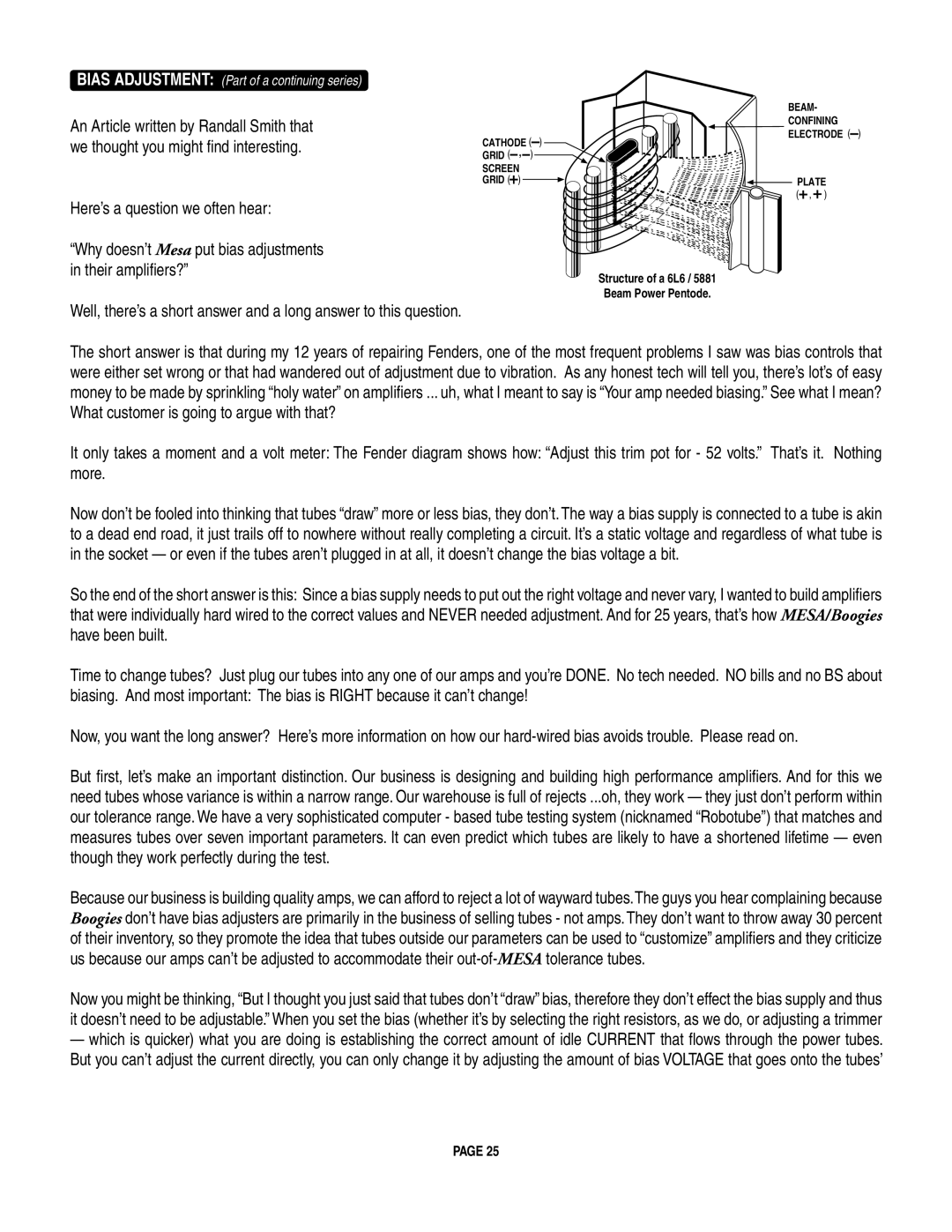pmn specifications
Mesa/Boogie has long been at the forefront of amplifier innovation, and the Mesa/Boogie PMN (Powerful Musical Network) is a testament to the brand’s commitment to exceptional sound quality and versatility. The PMN series is designed primarily for guitarists and musicians seeking a blend of power, flexibility, and tone-shaping capabilities.One of the main features of the PMN series is its robust power output. With variants that can handle 50 to 100 watts, the PMN delivers enough volume for live performances while also providing the opportunity to dial back the wattage for studio use. This flexibility allows musicians to achieve that desirable "cranked" tube amp sound at lower volumes, making it an excellent choice for in-home practice or studio environments.
Another key characteristic of the PMN series is its advanced tone-shaping capabilities. The amplifiers come equipped with multiple channels, each offering distinct tonal characteristics. Musicians can switch from clean, sparkling tones to rich, saturated overdrives with the flick of a switch. The amp's comprehensive EQ controls allow for detailed adjustments, ensuring that players can sculpt their sound precisely to their liking.
Mesa/Boogie is also known for its innovative technologies, and the PMN series incorporates several cutting-edge features. The "Multi Watt" technology provides options for optimizing power and headroom according to the player's preferences and needs. This design allows the amp to operate in different power modes, giving artists the option to tailor their sound further.
Additionally, the PMN series includes the "Graphic EQ" feature which allows players to visualize and manipulate their sound in real-time. This interactive aspect of tone shaping helps musicians develop their own unique sonic signature.
The construction of the PMN series amplifiers also reflects Mesa/Boogie's commitment to quality. Built from durable materials with a focus on reliability, these amplifiers are designed to withstand the rigors of touring and frequent use. The attention to detail in both craftsmanship and electronics guarantees that players will get reliable performance over time.
Overall, the Mesa/Boogie PMN series stands out as a powerful tool for musicians who demand versatility and exceptional sound quality. With its potent output, advanced tone control, and innovative technology, it serves as a valuable asset for players in a variety of musical genres.

